| No. | Portrait | Name | Term of office | Length of term | Monarch | Premier/Prime Minister |
|---|
| As lieutenant-governor |
|---|
| 1 | 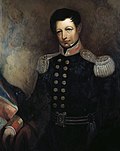 | William Hobson
(1792–1842) | 30 January 1840 | 3 May 1841 | 1 year, 93 days | Victoria | None [b] |
| As governor |
|---|
| (1) |  | William Hobson
(1792–1842) | 3 May 1841 | 10 September 1842 | 1 year, 130 days | Victoria | None [b] |
| 2 |  | Robert FitzRoy
(1805–1865) | 26 December 1843 | 17 November 1845 | 1 year, 326 days |
| 3 | 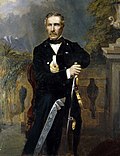 | Sir George Grey
(1812–1898) | 18 November 1845 | 31 December 1853 [c] | 8 years, 43 days |
| 4 |  | Thomas Gore Browne
(1807–1887) | 6 September 1855 | 2 October 1861 | 6 years, 26 days | |
| Henry Sewell |
| William Fox |
| Edward Stafford |
| William Fox |
| (3) |  | Sir George Grey
(1812–1898) | 4 December 1861 | 5 February 1868 | 6 years, 63 days | |
| Alfred Domett |
| Frederick Whitaker |
| Frederick Weld |
| Edward Stafford |
| 5 | 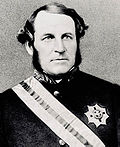 | Sir George Bowen
(1821–1899) | 5 February 1868 | 19 March 1873 | 5 years, 42 days | |
| William Fox |
| Edward Stafford |
| George Waterhouse |
| William Fox |
| 6 |  | Sir James Fergusson, 6th Baronet
(1832–1907) | 14 June 1873 | 3 December 1874 | 1 year, 172 days | Julius Vogel |
| 7 |  | George Phipps, 2nd Marquess of Normanby
(1819–1890) | 9 January 1875 | 21 February 1879 | 4 years, 43 days | |
| Daniel Pollen |
| Julius Vogel |
| Harry Atkinson |
| George Grey |
| 8 |  | Sir Hercules Robinson
(1824–1897) | 17 April 1879 | 8 September 1880 | 1 year, 144 days | |
| John Hall |
| 9 |  | Sir Arthur Hamilton-Gordon
(1829–1912) | 29 November 1880 | 23 June 1882 | 1 year, 206 days | |
| Frederick Whitaker |
| 10 |  | Sir William Jervois
(1821–1897) | 20 January 1883 | 22 March 1889 | 6 years, 61 days | |
| Harry Atkinson |
| Robert Stout |
| Harry Atkinson |
| Robert Stout |
| Harry Atkinson |
| 11 |  | William Onslow, 4th Earl of Onslow
(1853–1911) | 2 May 1889 | 24 February 1892 | 2 years, 298 days | |
| John Ballance |
| 12 |  | David Boyle, 7th Earl of Glasgow
(1833–1915) | 7 June 1892 | 6 February 1897 | 4 years, 244 days | |
| |
| 13 | 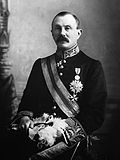 | Uchter Knox, 5th Earl of Ranfurly
(1856–1933) | 10 August 1897 | 19 June 1904 | 6 years, 314 days | | Richard Seddon |
| Edward VII |
| 14 | 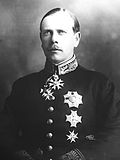 | William Plunket, 5th Baron Plunket
(1864–1920) | 20 June 1904 | 8 June 1910 | 5 years, 353 days | | |
| William Hall-Jones |
| |
| | Joseph Ward |
| 15 |  | John Dickson-Poynder, 1st Baron Islington
(1866–1936) | 22 June 1910 | 2 December 1912 | 2 years, 163 days | George V | |
| Thomas Mackenzie |
| |
| 16 |  | Arthur Foljambe, 2nd Earl of Liverpool
(1870–1941) | 19 December 1912 | 27 June 1917 | 4 years, 190 days | | William Massey |
| As governor-general |
|---|
| 1 |  | Arthur Foljambe, 2nd Earl of Liverpool
(1870–1941) | 28 June 1917 | 7 July 1920 | 3 years, 9 days | George V | William Massey |
| 2 |  | John Jellicoe, 1st Viscount Jellicoe
(1859–1935) | 27 September 1920 | 26 November 1924 | 4 years, 60 days |
| 3 |  | Sir Charles Fergusson, 7th Baronet
(1865–1951) | 13 December 1924 | 8 February 1930 | 5 years, 57 days | |
| Francis Bell |
| Gordon Coates |
| Joseph Ward |
| 4 |  | Charles Bathurst, 1st Baron Bledisloe
(1867–1958) | 19 March 1930 | 15 March 1935 | 4 years, 361 days | |
| George Forbes |
| 5 | 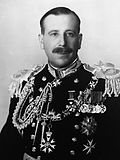 | George Monckton-Arundell, 8th Viscount Galway
(1882–1943) | 12 April 1935 | 3 February 1941 | 5 years, 297 days | | |
| | Michael Joseph Savage |
| Edward VIII |
| | |
| |
| 6 |  | Sir Cyril Newall
(1886–1963) | 22 February 1941 | 19 April 1946 | 5 years, 56 days | George VI | Peter Fraser |
| 7 | 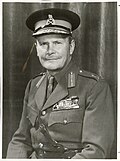 | Sir Bernard Freyberg [d]
(1889–1963) | 17 June 1946 | 15 August 1952 | 6 years, 59 days | | |
| | |
| | |
| 8 |  | Sir Willoughby Norrie
(1893–1977) | 2 December 1952 | 25 July 1957 | 4 years, 235 days | Elizabeth II | Sidney Holland |
| 9 |  | Charles Lyttelton, 10th Viscount Cobham
(1909–1977) | 5 September 1957 | 13 September 1962 | 5 years, 8 days | |
| Keith Holyoake |
| Walter Nash |
| |
| 10 |  | Sir Bernard Fergusson
(1911–1980) | 9 November 1962 | 20 October 1967 | 4 years, 345 days | Keith Holyoake |
| 11 |  | Sir Arthur Porritt, 1st Baronet
(1900–1994) | 1 December 1967 | 6 September 1972 | 4 years, 280 days | |
| Jack Marshall |
| 12 |  | Sir Denis Blundell
(1907–1984) | 27 September 1972 | 5 October 1977 | 5 years, 8 days | |
| Norman Kirk |
| Bill Rowling |
| |
| 13 |  | Sir Keith Holyoake
(1904–1983) | 26 October 1977 | 23 October 1980 | 2 years, 363 days | Robert Muldoon |
| 14 |  | Sir David Beattie
(1924–2001) | 6 November 1980 | 10 November 1985 | 5 years, 4 days | |
| David Lange |
| 15 |  | Sir Paul Reeves
(1932–2011) | 20 November 1985 | 29 November 1990 | 5 years, 9 days | |
| Geoffrey Palmer |
| Mike Moore |
| |
| 16 |  | Dame Catherine Tizard
(1931–2021) | 12 December 1990 | 3 March 1996 | 5 years, 104 days | Jim Bolger |
| 17 |  | Sir Michael Hardie Boys
(1931–2023) | 21 March 1996 | 21 March 2001 | 5 years | |
| Jenny Shipley |
| |
| 18 |  | Dame Silvia Cartwright
(born 1943) | 4 April 2001 | 4 August 2006 | 5 years, 122 days | Helen Clark |
| 19 |  | Sir Anand Satyanand
(born 1944) | 23 August 2006 | 23 August 2011 | 5 years | |
| |
| 20 |  | Sir Jerry Mateparae
(born 1954) | 31 August 2011 | 31 August 2016 | 5 years | John Key |
| 21 |  | Dame Patsy Reddy
(born 1954) | 28 September 2016 | 28 September 2021 | 5 years | |
| Bill English |
| |
| 22 |  | Dame Cindy Kiro
(born 1958) | 21 October 2021 | Incumbent | 4 years, 38 days | Jacinda Ardern |
| Charles III | |
| Chris Hipkins |
| Christopher Luxon |






































